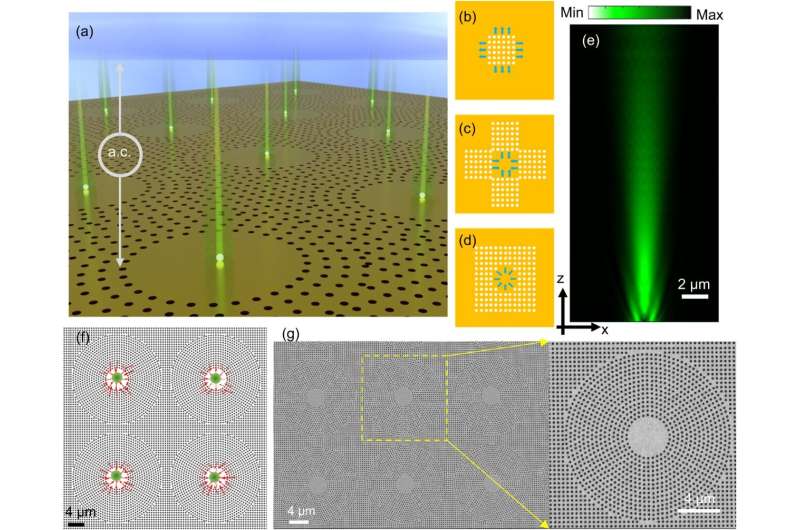This article has been reviewed according to Science X's editorial process and policies. Editors have highlighted the following attributes while ensuring the content's credibility:
fact-checked
peer-reviewed publication
trusted source
proofread
Researchers develop plasmonic nanotweezers to more rapidly trap potentially cancerous nanosized particles

Vanderbilt researchers have developed a way to more quickly and precisely trap nanoscale objects such as potentially cancerous extracellular vesicles using cutting-edge plasmonic nanotweezers.
The practice by Justus Ndukaife, assistant professor of electrical engineering, and Chuchuan Hong, a recently graduated Ph.D. student from the Ndukaife Research Group, and currently a postdoctoral research fellow at Northwestern University, has been published in Nature Communications.
Optical tweezers, as acknowledged with a 2018 Physics Nobel Prize, have proven adept at manipulating micron-scale matter like biological cells. But their effectiveness wanes when dealing with nanoscale objects. This limitation arises from the diffraction limit of light that precludes focusing of light to the nanoscale.
A breakthrough concept in nanoscience, called plasmonics, is being used to surpass the diffraction limit and confine light to the nanoscale. However, trapping the nanoscale objects near plasmonic structures can be a lengthy process because of the wait for nanoparticles to randomly approach the structures.
But Ndukaife and Hong have provided a speedier solution with the introduction of a high-throughput plasmonic nanotweezer technology termed "Geometry-induced Electrohydrodynamic Tweezers" (GET), which enables the rapid and parallel trapping and positioning of single nanoscale biological objects like extracellular vesicles near plasmonic cavities in a matter of seconds without any harmful heating effects.
"This achievement … marks a significant scientific milestone and charts a new era for optical trapping at the nanoscale using plasmonics," says Ndukaife. "The technology may be used to trap and analyze single extracellular vesicles with high throughput to understand their fundamental roles in diseases such as cancer."
Ndukaife recently had a paper published in Nano Letters that discusses using optical anapoles to more effectively trap nanosized extracellular vesicles and particles to analyze their roles in cancer, and neurodegenerative diseases.
More information: Chuchuan Hong et al, Scalable trapping of single nanosized extracellular vesicles using plasmonics, Nature Communications (2023). DOI: 10.1038/s41467-023-40549-7
Journal information: Nature Communications , Nano Letters
Provided by Vanderbilt University



















